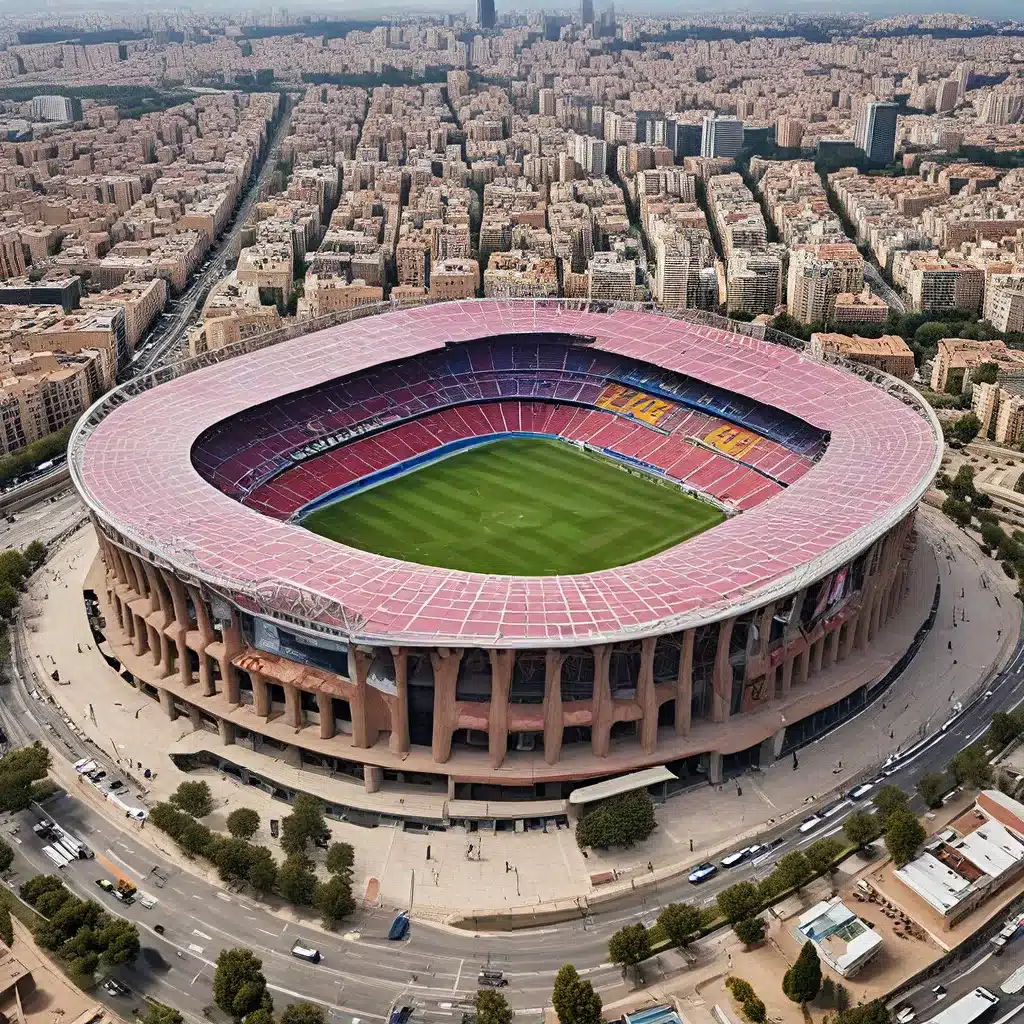
The Estadi Camp Nou, also known as the Camp Nou, is a colossal and iconic stadium that has become synonymous with the FC Barcelona football club, one of the most successful and beloved teams in the world. This architectural marvel, situated in the Les Corts district of Barcelona, is not just a mere sports venue, but a cultural icon that holds a deep significance in the hearts of football enthusiasts worldwide.
A Towering Presence in European Football
With a seating capacity of over 99,000, the Camp Nou is the largest stadium in Europe and the third-largest in the world. Its sheer size and grandeur are a testament to the scale of FC Barcelona’s popularity and the passion of its devoted fan base, affectionately known as the ‘culés’. The stadium’s impressive curved stands and intricate roof structure, designed by architects Francesc Mitjans, Josep Soteras, and Lorenzo García-Barbón, create a visually stunning and awe-inspiring architectural masterpiece.
One of the most astonishing facts about Camp Nou is that it holds the title for being the largest stadium in Europe, with its colossal seating capacity dwarfing that of many other renowned sporting arenas. This impressive scale has allowed the stadium to host a myriad of iconic matches and events, including the opening ceremony of the 1992 Summer Olympics, further cementing its reputation as a true landmark in the world of football.
A Legendary Playground for Football Greats
The Camp Nou has not only been a stage for extraordinary matches but also the cherished playground of some of the greatest footballers of all time. The stadium has witnessed the rise of Lionel Messi, the Argentine superstar who has mesmerized crowds with his incredible skills and record-breaking performances. Messi’s name has become inextricably linked with the Camp Nou, as he has spent his entire professional career with FC Barcelona, captivating fans with his awe-inspiring displays.
The Camp Nou has been graced by some of the most iconic footballers in history, from the legendary Johan Cruyff and Ronaldinho to more recent heroes like Xavi and Andrés Iniesta. These legends have left an indelible mark on the sport, and their achievements at the Camp Nou have only added to the stadium’s illustrious legacy.
A Captivating Atmosphere and Fan Experience
Attending a match at the Camp Nou is a truly unique and unforgettable experience. The electric atmosphere created by the passionate ‘culés’ fans, who sing the club’s anthem, the ‘Cant del Barça’, with unwavering fervor, reverberates throughout the stadium, creating an intense and immersive ambiance. The sheer scale of the venue and the unwavering loyalty of the supporters contribute to the incredible turnout for every home game, with the stadium often reaching its maximum capacity.
Beyond the match-day experience, the Camp Nou offers visitors a chance to delve deeper into the club’s history and achievements through the Camp Nou Museum. This comprehensive collection of memorabilia, trophies, and interactive exhibits celebrates the remarkable journey of FC Barcelona, providing fans with a unique opportunity to connect with the club’s rich heritage.
Embracing Sustainability and Community Engagement
The Camp Nou’s significance extends far beyond the realm of football, as the stadium has become a symbol of environmental responsibility and community engagement. The stadium has implemented various eco-friendly initiatives, including solar panels, rainwater harvesting systems, and energy-efficient lighting, making it a leading example of a green sports arena. This commitment to sustainability reflects the broader efforts of Barcelona in becoming a more environmentally-conscious city.
Furthermore, the Camp Nou has played a crucial role in fostering community development and social cohesion. Through its outreach programs and collaborations with educational institutions, the stadium serves as a learning resource, offering insights into sports science, management, and the sociological impact of football. These initiatives highlight the stadium’s role in supporting the local community and promoting the transformative power of the sport.
Exploring the Surrounding Neighborhood
The significance of the Camp Nou extends beyond the stadium’s boundaries, as the surrounding area offers a plethora of activities and sites for visitors to explore. From the serene Joan Miró Park and the majestic Palau Reial de Pedralbes to the bustling LIlla Diagonal shopping center, the neighborhood around the Camp Nou is a vibrant and diverse tapestry of culture, history, and entertainment.
The area surrounding the Camp Nou also boasts a range of culinary options, from traditional Catalan eateries to contemporary cafes and tapas bars, allowing visitors to immerse themselves in the local gastronomic heritage. Additionally, the official FC Barcelona store located nearby provides a one-stop-shop for fans seeking to purchase team merchandise and memorabilia.
Conclusion
The Estadi Camp Nou is more than just a football stadium; it is a cultural icon that encapsulates the essence of FC Barcelona and the city of Barcelona itself. From its architectural grandeur and legendary history to its commitment to sustainability and community engagement, the Camp Nou stands as a testament to the power of sports to captivate, inspire, and transcend the boundaries of the game.
Whether you’re a die-hard football fan or simply someone who appreciates architectural wonders, a visit to the Camp Nou is an experience that promises to leave a lasting impression. As you explore the stadium’s rich history, marvel at its breathtaking design, and soak in the electric atmosphere, you’ll undoubtedly understand why the Camp Nou is truly one of the most remarkable sporting venues in the world.
So, if you’re planning a visit to Barcelona, be sure to add the Camp Nou to your itinerary. Discover the architectural marvels and immerse yourself in the captivating world of one of the most iconic stadiums in the world.

